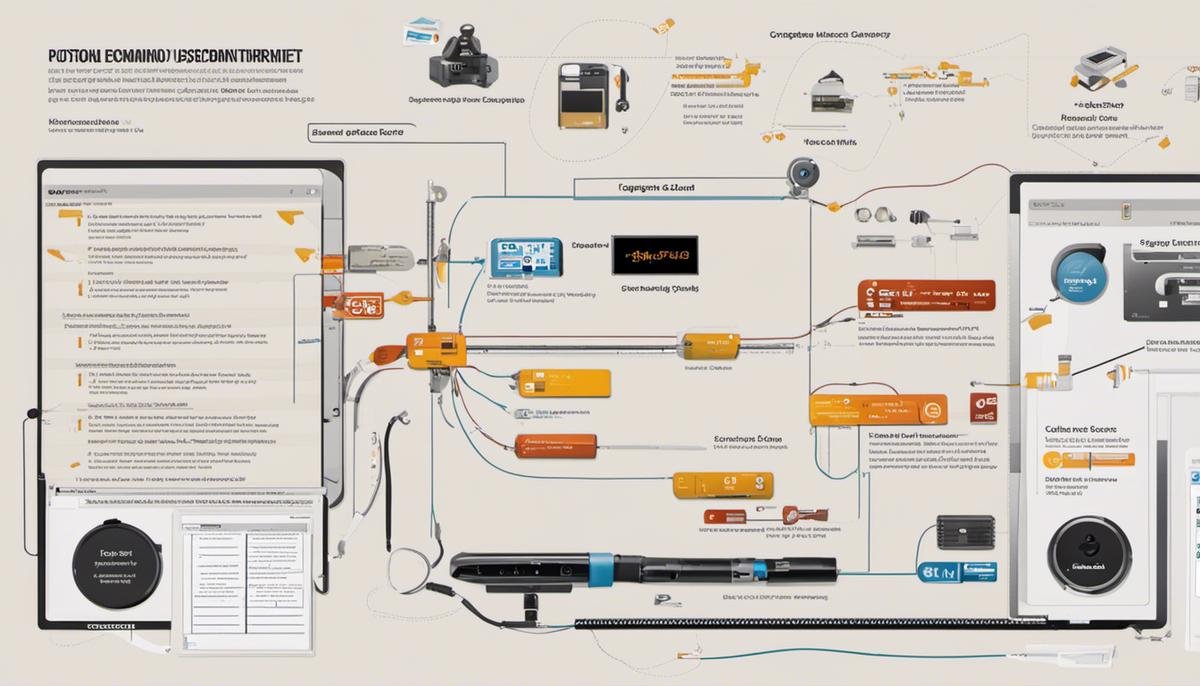Welcome to an enlightening journey where we unpack the power and potential of Autogpt, a breakthrough technology deeply rooted in the fascinating field of Natural Language Processing (NLP). Throughout this user guide, we strive to provide comprehensive, yet straightforward insights into this advanced tool, starting from an introduction to the core concepts behind Autogpt, its benefits and the sprawling NLP field it operates within. Along the way, we will guide you through the process of installing and setting up Autogpt, helping you master the nuances of the user interface and delve into a range of practical applications, from writing and code generation to translation and beyond.
Introduction to Autogpt
Understanding Autogpt
AutoGPT, which stands for Automatic Generative Pre-training Transformer, is an advanced machine learning model. It was developed by OpenAI and is used to generate human-like text. The model is an instance of transformer architecture, a deep learning model used for language understanding tasks.
AutoGPT utilizes an algorithm approach to understand, interpret, and generate human language. It belongs to a broader field called Natural Language Processing (NLP), an essential branch of artificial intelligence, that focuses on the interactions between computers and human languages.
The Operations of AutoGpt
AutoGPT operates by undergoing two primary steps: pre-training and fine-tuning. During the pre-training stage, the model learns to predict the next word in a sentence. For example, given “The sky is __,” the model would predict ‘blue,’ or another relevant word. Fine-tuning then occurs, where the model is trained on a narrower set of data to specialize it for detailed tasks.
AutoGPT is bidirectional, unlike its predecessor GPT (Generative Pre-training Transformer), meaning it can examine text context on both sides (before and after) a specific word. This features helps the model grasp the meaning with a higher level of precision, enhancing its outputs accordingly.
Benefits of AutoGpt
One major benefit of AutoGPT is that it can generate accurate and high-quality text that reads as if it was written by a human. This has a wide array of applications, from drafting emails or articles to translating languages, answering questions, and writing software code.
Moreover, AutoGPT can be fine-tuned to function in specific fields of knowledge like law or medicine, allowing it to provide expert assistance in those areas. It also boasts the benefit of minimizing bias in generated text as it can be trained to avoid certain language or slants, fostering greater neutrality and objectivity.
Learning About Natural Language Processing (NLP)
NLP sits at the core of AutoGPT. It is a subfield of artificial intelligence that focuses on enabling machines to understand and interpret human language in a valuable way. It combines computational linguistics and computer science algorithms to process naturally occurring language data.
NLP allows computers to understand, interpret, and use spoken or written language in useful ways. It can be applied to numerous tasks, including language translation, sentiment analysis, Named Entity Recognition (NER), part-of-speech tagging, and many more.
In the modern world, understanding NLP is increasingly essential due to its wide range of applications in numerous industries, like healthcare, ecommerce and the tech industry. It is behind the operations of popular smart assistants like Alexa and Google Assistant who need to understand and generate human language effectively. In the case of AutoGPT, NLP underpins its ability not just to understand, but produce complex human-like text.

Installing and Setting up Autogpt
Installing and Setting Up Autogpt: Preliminary Steps
Before you can install and set up Autogpt, ensure that you have Python installed in your system. Autogpt is compatible with Python version 3.6 and above. You should also have pip, a package installer for Python, on your system. If you don’t have these, download them from their official websites and follow the installation instructions.
Also, you will need to install the Transformers library, developed by Hugging Face. This library is key in deep learning tasks and you can install it via the pip command: pip install transformers.
In addition, make sure the Pytorch library, which is a prerequisite for using Autogpt, is installed.
Installing Autogpt
After setting up the necessary prerequisites, you can now proceed to install Autogpt. Navigate to the official Autogpt GitHub repository and clone the repository to your local system using Git:
git clone https://github.com/agemagician/autogpt.git
Once cloned, navigate into the autogpt directory from your command prompt or terminal:
cd autogpt
After navigating to the autogpt directory, use pip to install the required dependencies. These dependencies will be defaulted from the “requirements.txt” file. To install them, run:
pip install -r requirements.txt
Wait until the installation process is completed.
Configuring Autogpt for Optimal Usage
To configure Autogpt for optimal usage, you will need to modify certain parameters as per your requirements. These parameters are found in the ‘configs.py’ file.
Some of the parameters you can adjust include:
- MODEL: This refers to the architecture of the model you will be using. It should be set according to your task.
- TASKS: These are the different tasks the model will be trained on. You can add or remove tasks as per your requirements.
- BATCH_SIZE: This refers to the number of training examples utilized in one iteration. You can increase or decrease this number based on your system’s capabilities.
- MAX_LEN: This refers to the maximum length of the sequences that will be input into the model. Adjust this based on the nature of your data.
Training Autogpt
After configuring Autogpt, it’s time to train the model. To do this, navigate to the ‘main.py’ file and run it:
python main.py
This command will start the training process. Depending on the size of your dataset and the capabilities of your machine, this process can take from a few hours to several days. Ensure your machine has enough resources to handle the process without causing any interruptions.
Conclusion
With these steps, you should be able to install and set up Autogpt for optimal usage. As you continue using Autogpt, don’t forget to check for updates on the official Autogpt repository regularly, and update as necessary to keep up with the latest features and improvements.

Navigating the Autogpt Interface
Understanding the Autogpt User Interface: The Basics
The Autogpt user interface consists of several components designed to help you navigate and use the program effectively. The main components you should be familiar with include the control panel, text input field, task output area, and settings.
The Control Panel
The control panel is typically found at the top of the Autogpt user interface. This area allows you to interact with the system. There are buttons or commands you can use for starting a process, pausing it, or resetting it if needed. Familiarize yourself with these commands, as using them correctly can help streamline your work process.
Text Input Field
Another key component is the text input field. This is where you will write or paste the text that you want the system to learn from or work on. Ensure that the input text is well-formatted and accurate to improve the streamlined machine learning process.
Task Output Area
After inputting your text for learning, Autogpt then provides output in the task output area. Here, you’ll find the results of your prompts or learning tasks. It’s advisable to keep a keen eye on this section to review the produced text and check whether it meets your requirement.
Settings
The settings component, generally located at a corner of the interface, allows you to customize various parameters of your Autogpt program. This can include the learning rate, the batch size, and the number of layers, among other technical details. Knowing how to appropriately adjust these settings for your unique use case can greatly enhance the program’s performance and results.
Tips for Navigation
While navigating through the Autogpt user interface, it’s helpful to remember that the program is designed to be user-friendly. The layout is relatively simple and should present no significant challenges to even non-technical users. For more detailed instructions or troubleshooting, consider using the ‘Help’ function (often symbolized by a question mark) which can offer more detailed, context-specific assistance for your queries and issues.

Practical Applications of Autogpt
Understanding AutoGPT
AutoGPT, short for Generative Pretrained Transformer, is a language processing AI developed by OpenAI. It’s trained on a variety of internet texts and can be fine-tuned with your own specific data. It’s designed to assist with various tasks, including writing, code generation, and translation among others.
Setting Up AutoGPT
Firstly, you need to choose the right model for your task. AutoGPT offers several options that can cater to a variety of needs, from writing simple blog posts to generating complex code. Once you’ve selected your model, you will need to configure it.
To start with, you need to have an account at OpenAI and get the API keys. The keys are unique identifiers, which are used to authenticate your requests to the OpenAI models.
Make sure to install the OpenAI Python library in your environment, as it’s required to access the models. You can install it using pip:
pip install openai
Now, to load your API key you can use the following Python code:
import openai
openai.api_key = 'your-api-key'
Utilizing AutoGPT for Writing
To use AutoGPT for generating text, you need to use the openai.Completion.create() method. Provide a starting prompt and define the model type to instruct the AI.
Here’s an example of Python code:
response = openai.Completion.create(
engine="text-davinci-003",
prompt="Translate the following English text to French: '{}'",
max_tokens=60
)
print(response.choices[0].text.strip())
Employing AutoGPT for Code Generation
You can also use AutoGPT to generate code. All you need to do is to provide a suitable prompt and select an appropriate model.
Example:
response = openai.Completion.create(
engine="text-davinci-003",
prompt="Write a function in Python that reverses a string:",
temperature=0.5,
max_tokens=60
)
print(response.choices[0].text.strip())
Applying AutoGPT to Translation
AutoGPT can be used for translation tasks. Specify the source and target language in the prompt. The model will take care of the rest.
Example:
response = openai.Completion.create(
engine="text-davinci-003",
prompt="Translate the following English text to Spanish: '{}'",
max_tokens=60
)
print(response.choices[0].text.strip())
Remember, AutoGPT is not perfect and may produce incorrect or nonsensical outputs. So, always double-check the generated outputs. You can also tweak the parameters like temperature and tokens limit to control the output results.

Troubleshooting and Additional Resources
Understanding Autogpt: An AI-Powered Text Generation Tool
OpenAI’s Autogpt is an AI-powered text generation tool. It has various applications that include content generation, programming help, and learning new topics among others. Often, while using Autogpt, users might encounter certain common issues that can easily be resolved if one knows the right steps. The following guide aims to take you through these solutions and indicate where you can locate more resources to learn about Autogpt.
Resolving Common Issues
One common issue that may arise while using Autogpt is the tool generating inaccurate or incomplete responses. This could be due to the prompt given. It is important to provide detailed and explicit prompts to get accurate output. If the tool does not comprehend, simply revise and reformulate the prompt.
If Autogpt is not able to generate any output for a particular task, it might be because the tool does not yet support that task. It is advisable to refer to the tool’s documentation to ensure that the task at hand is supported.
Preserving Anonymity
An important aspect of using Autogpt is ensuring that conversations with the AI remain anonymous. Any data used to ask questions or generate responses should not include personally identifiable information. If you accidentally input such data, it will be wiped clean within 30 days as per OpenAI’s data policy.
Dealing with Offensive or Inappropriate Output
If Autogpt generates inappropriate or offensive output, it is recommended to report it directly to OpenAI. The AI is programmed to avoid generating unsafe content, but exceptions might occur, and notifying OpenAI helps improve Autogpt’s filters.
Exploring Additional Resources
To discover more about Autogpt and learn how to maximize its use, users can refer to OpenAI’s platform and its documentation. The OpenAI API documentation is a great tool to get a better understanding of how Autogpt works and how to implement it in different applications. To stay updated with any changes or improvements to Autogpt, keep an eye on OpenAI’s blog and their updates section.
Community and Social Media
There are numerous online communities, like Reddit and StackOverflow, where tips and tricks for using Autogpt are shared. Additionally, AI and tech-focused YouTube channels or podcasts often have discussions and tutorials about Autogpt. OpenAI is also active on social media platforms such as Twitter, where they share all the latest news and updates. They also welcome user feedback to improve Autogpt.
By understanding how to resolve common issues and where to find additional resources, users can make the most of their experience with Autogpt.

Through this comprehensive guide, our goal has been to equip you with the necessary tools to navigate and optimally utilize Autogpt. The journey through installing, setting up, and applying Autogpt has illuminated the impressive range of capabilities this exciting tool offers. Although there may be hitches along the way, this guide has endeavored to provide key troubleshooting advice and guide you towards additional resources to further your understanding. Knowledge is a continual process and with Autogpt, the limits of what you can achieve expand across linguistic and technological boundaries, continually creating new horizons. Thank you for taking this journey with us, and here’s to creating, translating, writing, and beyond with Autogpt!




